Building Strong Supplier Relationships in UAE for Business Growth

Building Strong Supplier Relationships in UAE for Business Growth
Supplier relationship management is an integral part of every supply chain, no matter what part of the world your business is in. For companies in the UAE, supplier relationship best practices may be particularly crucial since the region is among the top importers in the world. Moreover, reductions in global trade barriers have made it possible for companies in the middle-east to source materials, goods and services from various top exporters in the world, like China, India, the USA and Japan.
If your business is established in the UAE, strong relationships with vendors across borders can help you scale up quickly. Supplier relationships in the UAE also impact the procurement supply chain in many ways, as outlined below.
Vendor relations in the procurement supply chain
Here are the key benefits of vendor relationship best practices for your supply chain over the long term.
- It encourages supplier-led innovation
- It results in cost savings by eliminating the need to set up new contracts
- It helps form partnerships with suppliers whose goals align with yours
- It strengthens your supply chain and reduces fragmentation of the product procurement
- It improves operational efficiency by eliminating shortages and maverick purchases
Five tips for building and maintaining strong supplier relations in the modern world
Building good relations with your suppliers is tough, and maintaining them can be tougher still. Nevertheless, here are some industry best practices you can adopt to boost your supplier relationship management.
- Keep the lines of communication open
- Understand what your suppliers offer
- Choose vendors whose offerings align with your needs
- Draw out detailed and precise contracts to eliminate ambiguity in your dealings
- Uphold your end of the contract and pay your dues on time
Digitization: The need of the hour to tackle challenges in supplier relationships today
Supplier relationship management can be fraught with issues like a weak SRM strategy, failure to align supplier-client priorities, poor communication between the parties involved and even trouble enforcing the contracts involved.
Digitization and e-procurement can be revolutionary game-changers here. With digital transformation elevating your SRM practices, you can screen suppliers more effectively and partner with the right vendors. It also facilitates better communication with your vendors and leaves little room for ambiguity in contract management.
Build and maintain supplier relationship with experts
Managing supplier relationships in the UAE is a continuous process that needs to be updated periodically to keep pace with industry best practices. An expert procurement and supply chain partner like Moglix can help you navigate this evolving requirement, leaving you free to focus on your core business. Know How
3 reasons to perform procurement spend analytics

3 reasons to perform procurement spend analytics
What are you buying? Whom are you buying from?
How much have you spent on it, and how do the outlays compare to last year?
As an e-procurement professional today, these are only some of the many questions you will need the answers to. This is because monitoring and managing spend across the supply chain are integral to procurement leadership. And spend analytics can help you here.
What is spend analytics in procurement?
Spend analytics is gathering data related to an organization’s expenses, sorting, grouping and classifying that data, and then analyzing it to gather meaningful insights on where every penny goes. The end goal is to optimize costs and maximize profits.
3 key reasons you need procurement spend analytics
Spend analytics is pivotal in controlling and optimizing expenses in the procure-to-pay cycle. Here are 3 key reasons procurement leaders of today should prioritize this process.
1. Improved spend intelligence
With a robust spend analytics program, you get improved visibility of the costs incurred on procurement. Spending intelligence such as this can be crucial to reviving and optimizing your business supply chain. It also allows you to make more confident spending decisions because you are aware of how much your business is spending.
2. Easier identification of savings opportunities
E-procurement coupled with spend analytics also makes it possible for you to identify the areas that hold great potential for cost savings. By cost-cutting where you can and having a flexible procurement budget where needed, your business can benefit from incremental savings that stem from smart expense optimization.
3. Better supplier relationship management
Vendor management is pivotal to building profitable supplier relationships across the procurement cycle. And the information gathered from your data analytics processes can be invaluable in this regard. As a procurement professional today, you can use the insights gathered to partner with suppliers who meet specific criteria, promote supplier development, and build better relationships with your vendors.
Another challenge that procurement managers face is understanding KPIs they need to track to understand spends better. The key performance indicators (KPIs) to measure the effectiveness of your organization’s procurement spend analytics include:
● Cost savings
● Category-wise spending
● Supplier performance
● Vendor management
● Operational KPIs
Optimize your procurement with world-class spending analytics
Moglix offers intelligent spend benchmarking solutions that allow you to compare your procurement expenses with industry benchmarks and optimize your spending. Contact us today to know more about how our spend analytics solutions can help you on your path to absolute digital transformation.
Make the transition to sustainable procurement with this 5-step guide
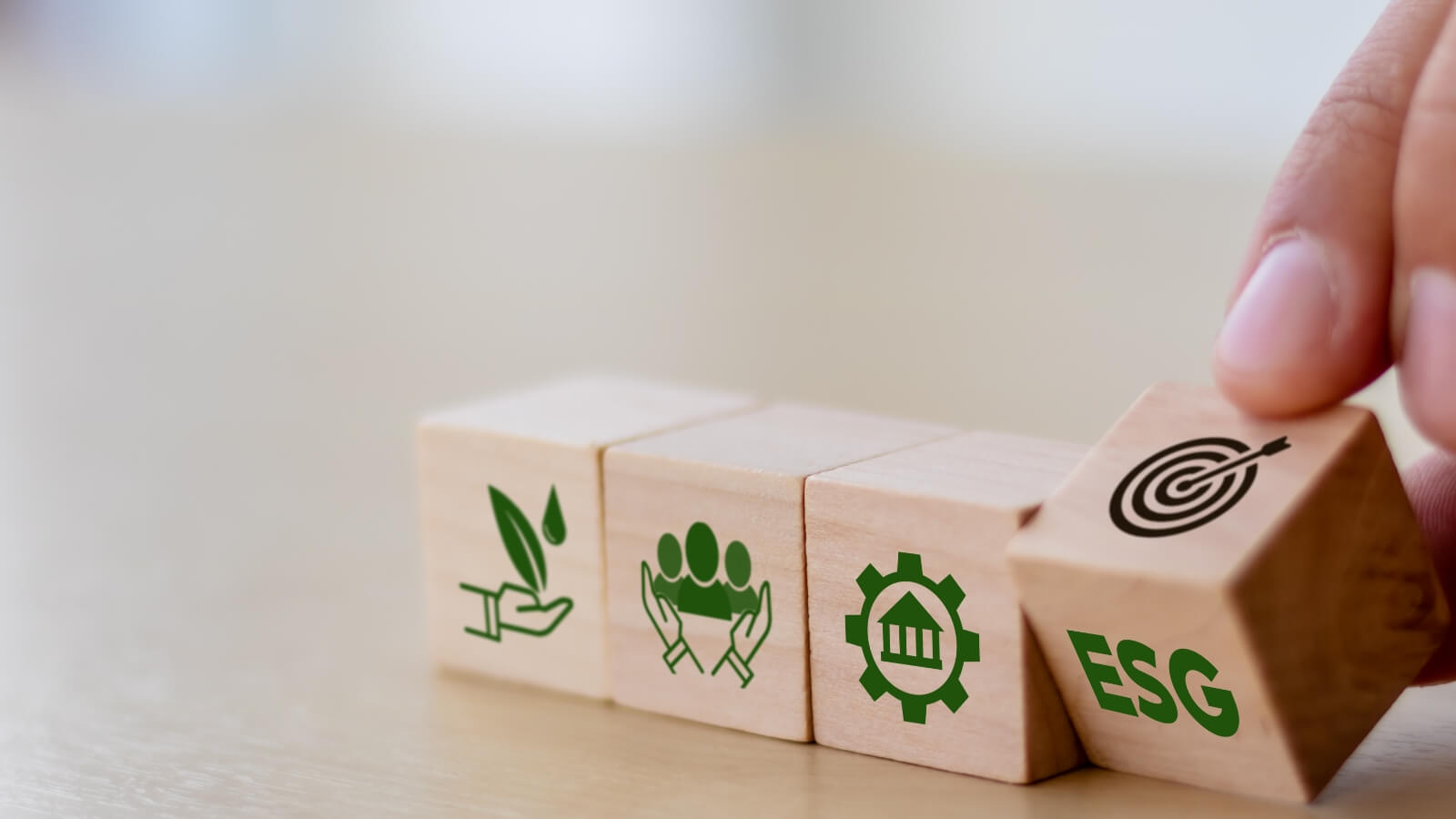
Make the transition to sustainable procurement with this 5-step guide
With ESG business practices gaining prominence worldwide, sustainable procurement may be more relevant than ever for your business. In theory, sustainable procurement is simple enough; it involves integrating ESG factors into your organization’s supply chain and procurement process. When done right, sustainable procurement can improve your brand reputation, promote better supplier relationships and increase profitability.
Data from the World Economic Forum shows us that sustainable business projects may lead to cost savings of 9% to 16% and can increase revenue by up to 20%. Research by Hackett also reveals that around 92% of companies are already poised to have a sustainable procurement program by 2023.
Your business can also join this league by adopting an immediate and effective action plan to make procurement more sustainable as we journey into a new year.
A simple, 5-step plan to achieve sustainable procurement
Here is what your business can do to make the transition from conventional to sustainable procurement faster and more effective.
1. Identify the critical areas in your supply chain.
Whether you follow conventional sourcing practices or have partial e-procurement implemented in your business, the first step to sustainability involves identifying the areas that matter. For most organizations, the critical areas in the supply chain include sourcing, negotiations, contract management, vendor management and payment, thus completing the procure-to-pay cycle.
2. Evaluate and define sustainable criteria for your business procurement
Once you have identified the key areas in your procurement cycle, evaluate how sustainable (or unsustainable) they are. This will give you a clear idea of how far you have come and how much you need to go. You can then define the sustainable criteria you must meet in each critical area of your supply chain.
3. Perform supplier due diligence
Supplier due diligence may be just as crucial as supplier relationships in the journey to a more sustainable future. Before you sign a contract with a potential supply partner, evaluate their commitment to sustainability and assess if you have shared business values. In the long run, this will make vendor management much more accessible and help you progress more quickly on the path to sustainability.
4. Develop the roadmap for sustainable sourcing
The next step to sustainable procurement is developing a roadmap that makes your strategy for the future clearer and easier to implement. First, identify the critical business practices you want to focus on to future-proof your supply chain sustainably. Automation, paperless contract management, digital transformation and strict adherence to your organization’s ESG goals are essential pillars of your strategy.
5. Roll out your plan and review it periodically.
To complete the action plan towards a more sustainable procurement process, you need to roll out your developed strategy and monitor its implementation. For best results, it is advisable to review your plan periodically, identify weak areas, if any, and work on strengthening sustainable practices within your procurement department.
Want to accelerate the shift to e-procurement and sustainability?
Moglix can help you with this. Our end-to-end procurement solutions can overhaul your supply chain procurement strategies an help on your path of digital transformation, while keeping in mind your sustainability goals. Contact us today to learn more about how this works
Do you have the right strategy to reduce indirect procurement costs?
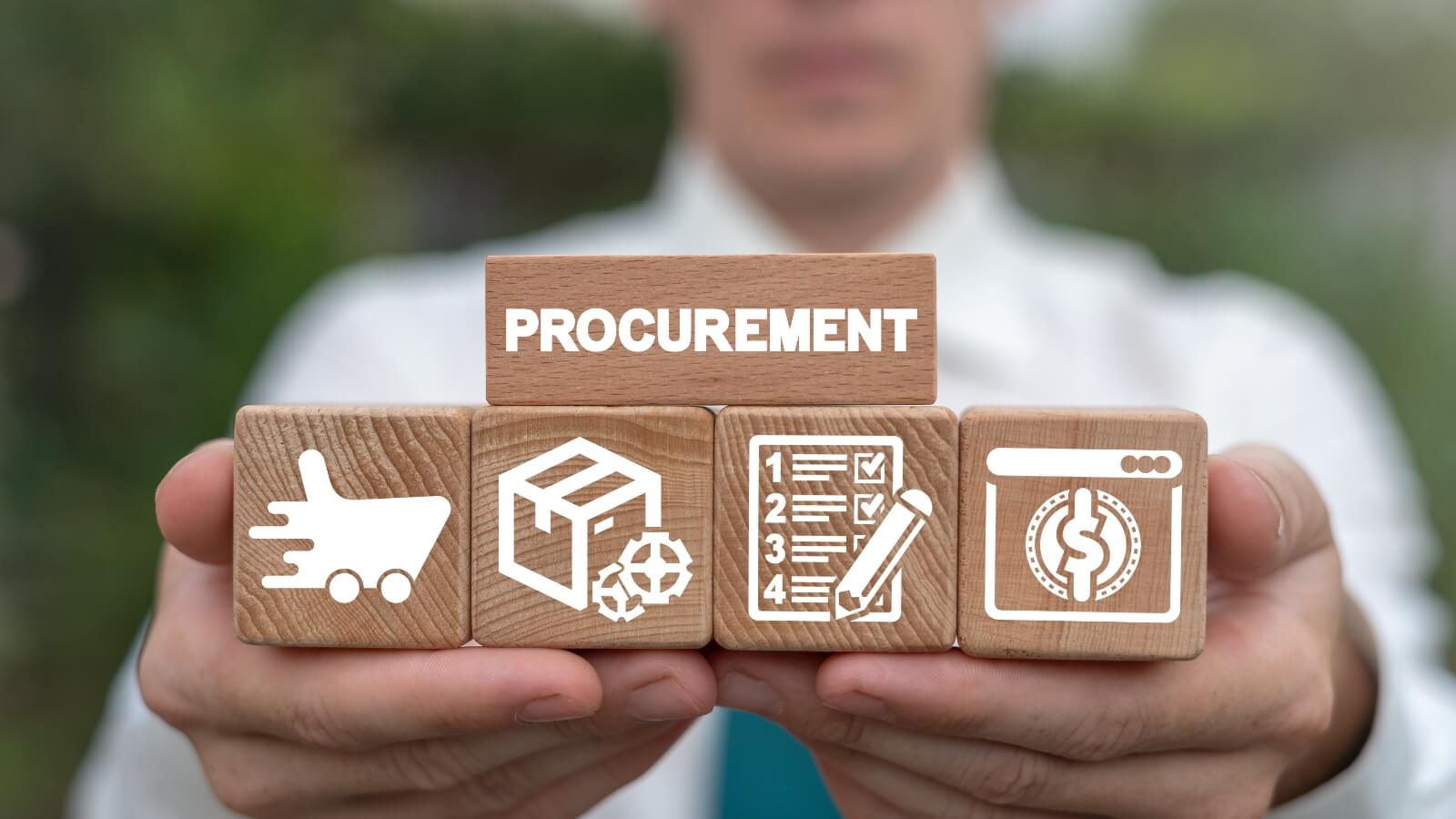
Do you have the right strategy to reduce indirect procurement costs?
Have you successfully implemented a procurement cost savings program, only to discover that your procurement expenses still need to be under control? If you answered yes to that, indirect costs related to procurement might be the weak link here.
While direct expenses are easier to track and control, indirect spending is easier to miss. This is changing now, with around 70% of procurement leaders increasingly shifting focus to regulate indirect spending in their supply chain. Your business can also benefit from this approach. However, the first step of this journey is decoding what qualifies as indirect costs in the procure-to-pay cycle.
What are the indirect spends in your supply chain?
Indirect procurement costs are those expenses that are not directly related to your production cycle or the sale of goods and services. These outlays may still be necessary for various ancillary areas of your business to function smoothly. Some common examples of indirect spending in procurement include the following:
● The cost of renting your office premises
● The cost of procuring IT support
● The expenses incurred on office stationery and supplies
● The purchase of office furniture
● The purchase of maintenance, repair, and operation (MRO) consumables
Three fail-safe ways to reduce indirect procurement costs
Here are three tried and tested strategies to keep your organization’s indirect procurement costs from ballooning beyond the budgeted limit.
1. Identify the vulnerable points in your procurement spending.
To effectively save on indirect costs, you must first identify areas where your business inadvertently spends more than necessary. A quick analysis of your historical procurement spending can help zero in on these weak links. Then, once you know what to cut down on, you can devise a plan to reduce these outlays.
2. Compare your supplier options before making a decision.
MRO procurement, office supplies, furniture, and other indirect heads may not vary significantly in quality from one supplier to another. So, compare your options and partner with a cost-effective solution vendor. Also, indirect procurement is not directly tied to production. This gives you more freedom to choose suppliers and vendors who offer the best value for money.
3. Automate your procure-to-pay system
Reports indicate that complete digital adoption and e-procurement can deliver cost savings of 45% or more. By extension, automation in indirect procurement can single-handedly help reduce wasteful expenditure and improve profitability. It also improves visibility of expenses and make the supply chain for indirect procurement more effective and efficient.
Want to get off to a great start? Say hello to your smart procurement partner!
A digital procurement partner like Moglix can help streamline your organization’s procure-to-pay cycle and optimize your procurement spends without compromising profitability. Get in touch with us to step into the future of procurement, with our tech enabled integrated e-procurement solutions.
The ever-evolving landscape of supply chain trends
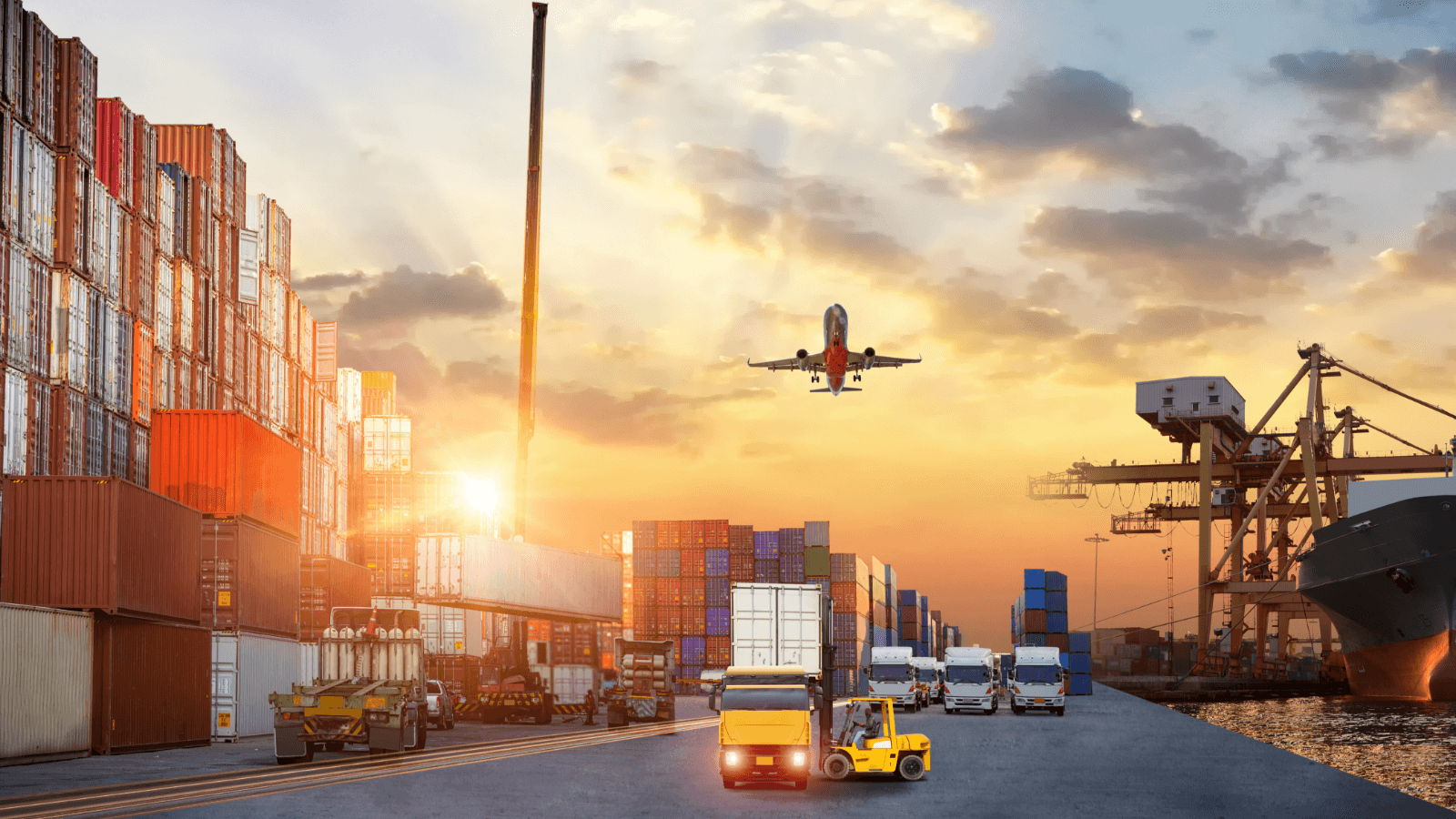
The ever-evolving landscape of supply chain trends
Businesses have not remained immune to the waves of challenges brought forth by the pandemic. Across sector lines and international boundaries, organizations have had to innovate to survive the new normal and, eventually, thrive.
The New Normal
From supply chain constraints to repeated halts in operations, businesses have had to contend with an array of bottlenecks during this unprecedented time ridden with a global pandemic and the war in Ukraine. One of the major trends to emerge has been organizations’ increasing reliance on technology and digital procurement.
Since every link in the value chain has been adversely affected due to a host of reasons, including supply-side shortages, demand-side stagnation, and a general environment of uncertainty, the path to recovery has been forged with equal parts resilience and restraint.
Upcoming Supply Chain Trends for 2022
Due to the dynamic nature of the supply chain, the trends are ever-evolving and hence unpredictable. However, here are some of the key supply chain trends that surfaced in 2021 and are expected to stay true in 2022:
Widening the value chain basket: One of the main learnings for organizations during the pandemic is the lacunae caused by overreliance on one or two supply chain partners. Businesses are increasingly putting their eggs in different baskets by collaborating with a wider range of suppliers, marketers, and distributors. Though this means increased business coordinations, negotiations etc. across the value chain, organizations that enable seamless digital procurement have come to the industries rescue through their ability consolidate scattered vendor base on a single platform
1. Technology and automation to the rescue: In the wake of the pandemic, businesses are emphasizing leveraging technology to achieve higher accuracy in demand forecasting, production planning, and marketing strategy. Artificial Intelligence and Machine Learning are increasingly being applied to ensure minimal disruptions in the supply chain. Data generated with the help of these emerging technologies are being constantly employed to identify potential areas of growth in business.
2. Building resilience against the global logistics disruption: The widespread disruption of the global logistics chain has caused businesses severe headaches and compelled them to build resilience to production delays, raw material shortfalls, and extremely volatile demand trends. This has driven a drastic restructuring of the supply chain for the better.
3. Supply Chain Trends in the UAE
Being a key member of the GCC, the UAE has robust free trade associations with several countries. In addition to this, the country has bilateral trade agreements with India, The Netherlands, etc. Recently, UAE announced its intention to deepen its ties with growing economies. Some of its business negotiations with countries like India, Turkey, and Indonesia seem to indicate a positive trend in this direction.
Some of the recent supply chain trends in the UAE are:
- A rise in the prominence of e-commerce and related logistics
- Growth of the pharmaceutical sector
- Easing of duties on import-exports
- Growth of bilateral agreements for trade
The Foreign Trade Ministry of UAE feels that these trade pacts are bound to increase foreign direct investment and enhance business growth in terms of volumes.
Choose Moglix To Stay Ahead of the Curve
The outlook for the UAE logistics market seems to hint at a robust 6.5% CAGR projection for the period of 2022-2027. With supply chain trends picking up pace in what we see as a potential post-pandemic world, it is important for businesses to stay ahead of the curve in order to maximize value.
If you are looking to transform your supply chain and focus on digital procurement, Moglix can help you stay ahead of the curve. We aim to optimize strategic procurement and bring in supply chain efficiency for organizations across various sectors, including manufacturing, infrastructure, and Oil and Gas in the UAE.
Equipped with what is said to be future facing technology and dynamic capabilities such as Integrated Procurement Solutions, Automated Workflows, and Catalog-Based Buying, Moglix ensures that you can take your organization’s operations to the next level by enhancing efficiency and maximizing cost-effectiveness. Visit our website to know more.
Strategies To Address Procurement Woes In a Volatile Supply Chain Market (Turning Chaos Into Control)

Strategies To Address Procurement Woes In a Volatile Supply Chain Market (Turning Chaos Into Control)
Part Two – The Solutions
As discussed earlier in part 1 of this blog, the global COVID-19 pandemic and ongoing war have forced organizations to withstand a highly volatile supply chain environment. The prevailing procurement environment is costlier due to the exponential rise in the cost of shipping and increased operational costs. In addition to these reasons, continuing exclusive use of the existing legacy technologies and switching to spot bidding for logistics by the organizations are adding burden to the businesses. As a wise option for surviving the highly volatile supply chain environment, businesses should turn their focus to digital procurement and technology.
From Chaos to a Semblance of Control
Faced with an array of challenges, including higher costs of freight, reduced revenue, extreme pressure on bottom lines, and persistence with obsolete legacy systems, businesses are increasingly turning to technology and digital procurement to ensure their supply chain and sourcing strategies can keep up with the high volatility of the market.
Here are some of the solutions businesses are adopting to attain excellence in their logistics management.
1. Evolution, Adaptation, and Responsiveness: A high degree of volatility in the supply chain and the business environment calls for a correspondingly high degree of adaptation on the part of businesses. This is why most businesses are switching to Dynamic Market Sourcing.
As opposed to Traditional Cycle Sourcing, its dynamic counterpart enables organizations to constantly assess the market, have better communication with their supply chain partners, and manage the ever-changing landscape of freight costs, and the influx of new suppliers.
2. Leveraging technology to stay ahead of the curve: In this day and age, businesses are largely driven by data. With high fluctuations on the demand and supply side alike, businesses must leverage technology and data-based insights to be as dynamic and adaptive as possible.
From better demand forecasting to an increased emphasis on automation, there are myriad ways through which the challenges of a highly volatile supply chain can be met head-on and with success.
3. Risk management: Risk is an integral facet of any business, and the higher the accuracy of risk assessment is, the higher an organization’s chances to mitigate risks in an efficient manner. One of the key strategies in managing supply chain-related risks is having multiple suppliers instead of one or two.
Another solution is to always be prepared by analyzing market trends and conducting what-if analyses. This way, your organization can be well placed to deal with a high-risk situation. Risk assessment is, in many ways, akin to an airbag in a vehicle. It protects your business from potential crashes.
The Future of Supply Chain
You can now bring digital procurement to the forefront of your business and excel in a highly volatile supply chain environment by relying on Moglix’s Integrated Procurement Solutions, Automated Workflows, and Catalog-Based Buying Solutions, amongst others, to revolutionize your business’s approach to logistics. To know more, visit our website.
Strategies To Address Procurement Woes In a Volatile Supply Chain Market (Turning Chaos Into Control)

Strategies To Address Procurement Woes In a Volatile Supply Chain Market (Turning Chaos Into Control)
Part One: The Challenges
Change is the only constant and the global COVID-19 pandemic had brought this universal truth home in an unprecedented manner. Businesses across the globe had found themselves faced with severe supply chain and sourcing challenges, leading to higher volatility and higher risk. In the face of such bottlenecks, traditional approaches to supply chain and logistics management were no longer effective or feasible.
Viability amidst volatility
It is no secret that one of the things that make businesses thrive is stability in processes. The pandemic and the ongoing war, however, disturbed the very foundations of stability and compelled organizations to withstand a highly volatile supply chain environment. Here are some of the challenges faced in the prevailing procurement environment:
1. Building capacity is now costlier: One of the main characteristics of the present sourcing market is the exponential rise in the cost of shipping. The rise in container freight and air freight has made it drastically difficult for businesses to build and sustain capacity and stability. For instance, before the pandemic struck the world, the freight for the China to USA route was around $1,500 (for a 40-foot container). This price is now anywhere between $10,000 to $15,000, making it financially nonviable.
2. Preserving the bottom line is now harder: With the rising cost of materials as well as shipping costs, organizations are increasingly grappling with higher operational costs. The problem is exacerbated by the constant decline in demand and, in turn, revenues. The combined effect is a significant drop in the bottom line of organizations.
3. Continuing with Legacy technologies: At a time when digital procurement is being looked at as a key driver to solve businesses’ supply chain woes, several organizations are still continuing with old and obsolete legacy systems. Not only are those systems time-consuming and cost-heavy, but they are also non-responsive to factors such as price compression, capacity changes, etc.
4. Switching to spot bidding for logistics: Traditionally reliant on annual freight contracts with low prices, businesses now have to manage the necessary switch to spot pricing in logistics. The restrictions in the capacity and movement of air cargo in the wake of the pandemic have brought spot price bidding to the fore, placing a higher than ever before pressure on their operational costs.
The Bottom Line
In order to survive and thrive amidst a highly volatile supply chain environment, businesses must turn to digital procurement and technology. This is where Moglix can help you transform your business through our Catalog Based Buying, Automated Workflow, Enhanced Visibility, and Integrated Procurement Solutions. Know more on our website.
The India-UAE CEPA: A Progressive Step

The India-UAE CEPA: A Progressive Step
Inked on February 18, 2022, the Comprehensive Economic Partnership Agreement (CEPA) between the United Arab Emirates (UAE) and India is a massive leap forward in the bilateral trade relations between the nations. The agreement is set to usher in a plethora of benefits for both the signatories.
What is The India-UAE CEPA?
The India-UAE CEPA is a bilateral free trade agreement between the nations that came into effect on May 1st, 2022. The CEPA has been envisaged as raising the total bilateral trade between the nations from $60 billion to $100 billion (for goods) and $15 billion (for services) over a five-year period.
With the CEPA coming into effect, there is set to be growth in the total value of bilateral trade as well as benefits in terms of technology exchange, movement of natural persons, government procurement, dispute redressal, and digital procurement, to name a few.
In addition to advantages on the economic front, the India-UAE CEPA is set to drive improvement in access to education, environmental protection measures, cultural exchange, etc. The landmark trade agreement has been projected to generate jobs in excess of 1 million across various sectors, for instance, agriculture, jewelry, and pharmaceuticals.
The Benefits of the CEPA for the UAE
The CEPA between the UAE and India is set to usher in the following significant benefits for the former.
1. Greater access to the Indian Market: The CEPA will provide more than 100 sub-sectors in the UAE access to the Indian market vis-a-vis the trade of goods and services. The UAE is set to gain preferential access on more than 90% of India’s tariff lines, particularly those related to exports.
2. Enhancement of Food Security: The agreement is a pivotal measure to address the UAE’s issues pertaining to food security. Through the establishment of a ‘Food Security Corridor Initiative’, there will be a comprehensive partnership and strategic procurement to improve the country’s logistical network for food.
3. Collaboration in the Education Sector: The CEPA also has provisions for collaborations between nations in the education sector. One of the cornerstones of this collaboration shall be the establishment of a first-of-its-kind Indian Institute of Technology on foreign soil – in the UAE.
4. Strategic Partnerships in Technology Sharing: The India-UAE CEPA has also been envisaged as a harbinger of an increased sharing of technological know-how and infrastructure between the signatory nations.
Choose a Consummate Player to Optimize your Procurement Process
The India-UAE CEPA is a significant step forward in the bilateral trade ties of the nations. And manufacturers and exporters in the UAE and India alike can benefit from access to a bigger and more diversified market, profitable strategic partnerships, and sharing of tech initiatives and innovations. A future focused organization like Moglix with its tech led B2B supply chain ecosystem can play a pivotal role in welcoming CEPA to the next phase of growth. To know more about how Moglix can augment and optimize the procurement process, click here.
Have You Explored These Performance Enablers for Your Procurement Team?
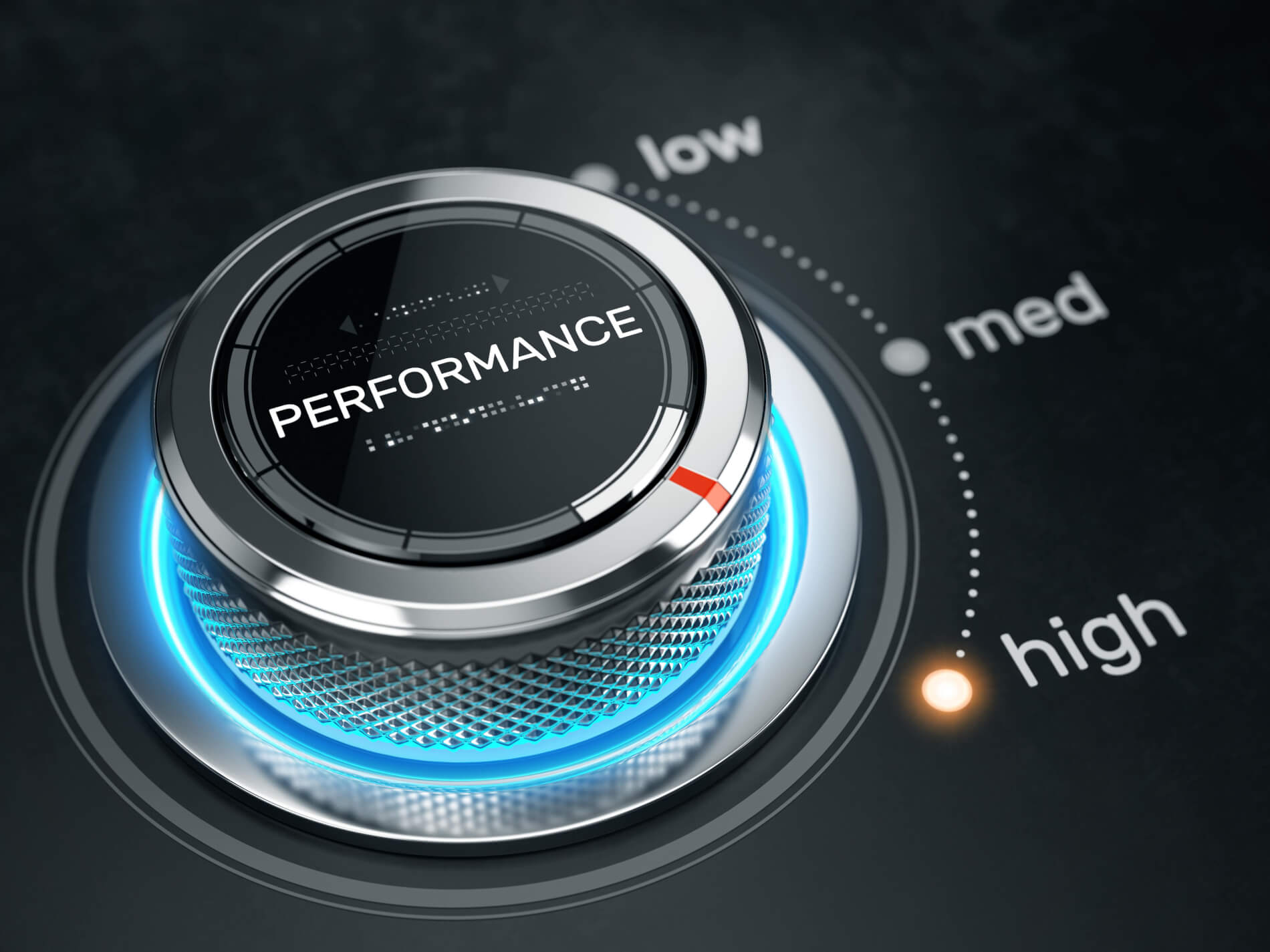
Have You Explored These Performance Enablers for Your Procurement Team?
While the world is still seemingly adapting to the rapid digital advancements, post-pandemic, there has been an even greater push on digitization to take center stage in procurement teams. This change has encouraged companies to remake their supply chains and is poised to think about how digital transformation plays a vital role in how the procurement function delivers value.
According to a recent study by WBR Insights, most procurement leaders in the middle east are investing less than 50% of their budgets in future technologies like artificial intelligence (AI), machine learning (ML), robotic process automation (RPA), cognitive procurement tools and more.
Strategic sourcing is becoming more predictive, transactional procurement is becoming more automated, and supplier relationship management is becoming more proactive.
A report by Gartner stated that more than 70% of sourcing and procurement professionals report using suppliers to tap into new-in-kind technology services and something outside their organization’s core business model.
Procurement is all set to become seamless and frictionless like never before, especially in the UAE. The recent announcement of the ‘Centennial 2071 project’ plans to make UAE the best country in the next 50 years and hopes to enable future generations to live a happier life with a better overall environment, more significant growth opportunities, and stronger communication links with the world. The Centennial 2071 project will focus on four core aspects: Economy, Education, Government Development, and Community Cohesion.
As the competition rises with new players entering the supply chain race, Middle Eastern businesses have a more significant advantage over existing businesses. With the help of futuristic strategies investing in new supply chain concepts and virtual or digital enablers can place them at the helm of digital innovation within a shorter turnaround time and a significant possibility of growth.
Let’s Look at Some Enablers Accelerating Procurement Performance in the UAE:
e-Procurement
e-Procurement or purchase-to-pay technology is used to make the order-delivery supply chain frictionless, contactless, and paperless. It has always existed within the market as a value-add to an on-premise enterprise resource planning (ERP) system.
e-Procurement has grown its utilities a lot more exponentially today to help procurement processes. It integrates and automates the entire back-office lifecycle of requisitioning, purchasing, receiving, paying, and accounting for indirect goods and services.
In the future, e-Procurement will increasingly leverage artificial intelligence, natural language processing, and robotic procurement automation to leverage technology into customizing the buying experience while cutting costs, increasing efficiency, reducing risk, and improving governance and insight on the internal operations. e-Procurement solutions in the UAE will be more open, network-oriented, autonomous, collaborative, and intelligent.
Catalog Based Buying
Procurement catalogs provide information about the items and services that company employees can order for internal use. While this is a very advanced way to strategically manage the overall inflow of spending, on the user end, it also gives the customer a broader and much more appealing range of products to pick.
In the future, intelligent cloud-based procurement platforms will lead to a more vertically integrated analysis, better support for CPOs, and efficient sourcing strategies. This digital transformation will elevate the procurement technologies providing business owners access to previously unavailable metrics.
Artificial Intelligence
A 2019 report on the ‘Government Artificial Intelligence Readiness Index’², which examined over 190 countries worldwide to determine its rankings, has also placed UAE at the top of the Arab world for its readiness to adopt Artificial Intelligence (AI) technologies.
Today UAE accounts for accelerated growth in AI and is estimated to account for 13.6% of GDP by 2030. With the announcement in October 2017, the UAE Government launched ‘UAE Strategy for Artificial Intelligence (AI)’ to boost government performance at all levels, especially the procurement business vertical. With the help of an integrated intelligent digital system, companies can now overcome challenges and provide quick, efficient solutions. Make the UAE the first in AI investments in various sectors. Another 2018 study by McKinsey projects that by 2030, 45% of existing work in the Middle East has the potential of being automated.
Machine Learning
Machine Learning has evolved from the study of computational learning theory and pattern recognition and has become a technology innovation that allows businesses to evaluate and make better decisions. It will enable the procurement businesses to predict outcomes and results based on models and algorithms.
It helps automate collecting, cleaning, classifying, and analyzing expenditure data in an organization. This is the key to identifying savings or paths to greater efficiency.
“A procurement VPA can improve the end-user experience of traditional procurement tools and increase spending under management by guiding people to the correct purchasing tool,” said Magnus Bergfors, research director at Gartner. “A CPA can provide summaries, recommendations, and advice in everything from supplier assessments and performance management, to risk management and compliance.”
Digital Track and Trace of Logistics
In the supply chain industry, track and trace identify the past and present locations of all product inventory and its entire product history. This technology enables a product’s (current) status to be captured through the value chain and to identify and verify its path retrospectively. Digital track and trace help businesses manage all operations and oversee execution at all levels; this means more proximity and less assumption of executed results leaves some to no margin of error.
The Future of Procurement
As digital supply chain transformation takes the lead in the UAE, businesses need to strategically re-evaluate to harness new technologies to become more agile and resilient. Sourcing and procurement are crucial for supply chain acceleration, increasing business value. Given the changing world, sourcing and procurement play an integral role in unlocking new value from the supply base and protecting the organization from future disruption.
Moglix is an Asia-based B2B commerce company specializing in the e-procurement of industrial products. We provide digital procurement and supply chain solutions across industries, such as FMCG, Healthcare, Construction, Oil & Gas, Metal & Mining among others. To know how your enterprise can unlock the benefits of new-age technology-driven procurement and supply chain solutions from Moglix, visit https://business.moglix.ae/contact-us/
How Manufacturers Can Save MRO Costs in UAE by 10%?
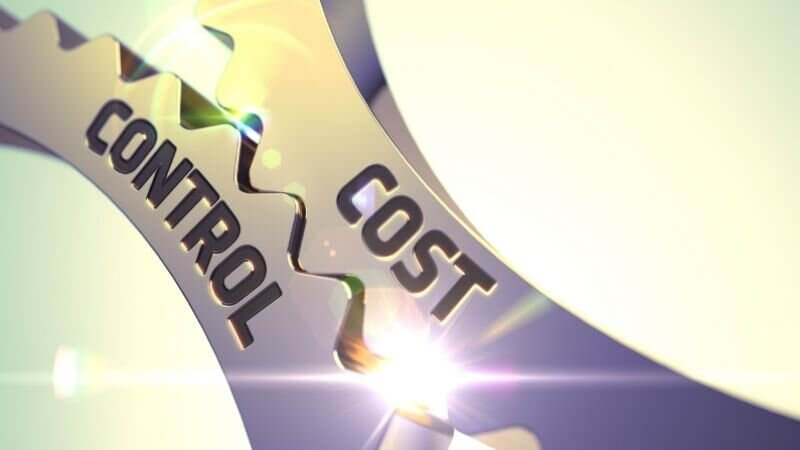
How Manufacturers Can Save MRO Costs in UAE by 10%?
If your enterprise is searching for solutions to save MRO costs in UAE, here is the catch. MRO costs usually account for somewhere between 5-10% of total costs and may not make up a significant chunk of the cost of goods sold (COGS). However, UAE has a highly competitive manufacturing landscape and even 1-2% of cost efficiencies can make or break your cost advantage.
To assist in a better way, we have outlined some of the steps to help manufacturers in the UAE avoid recurring expenses on MRO. If you are a manufacturer, you can take care of the following points to save MRO costs in UAE.
Manufacturers Must Minimize Return of Items
Delivering a product incurs a cost. Manufacturers price their products inclusive of that cost. However, when anything goes sideways, such as the product not being up to the quality standards as expected or has some defect, the buyer may return it. The return of items will add to the logistics expenses and impact the overall revenue.
Although the irregularities in the product may exist to some extent, manufacturers should try minimizing the double load on logistics by delivering the correct item in the first place. Here are a few points you can keep in check to reduce the rate of return:
- Quality Control Of Goods
- Correct Sizing Information
- Proper Packaging
- Timely Reviews and Feedback
- Round-the-clock Support
Take control of and implement those points to reduce the return of goods sold.
Manufacturers Should Opt for Digital Supply Chain Solutions
What humans can do, automation can do better. It holds in the case of supply chain management processes. It requires diligent work to manage the whole production line, i.e., from procurement to the final product delivery. If we focus just on the initial procurement part, there are different raw materials from various suppliers. On delving deeper, you have separate invoices for every procurement. On top of it, the communication channel is email, which requires regular follow-ups in case of any delays.
If you sum up all this, you will find it takes rigorous manual effort and consumes more time. As a result, your overall production time gets increased. However, if you enable procurement automation, you won’t have to stress repetitive tasks. Below are some notable advantages of relying on P2P automation:
- Easy-to-manage orders and supplies information
- A 50% reduction in TAT
- Easy monitoring of data
- Less hassle
Also, if multiple transactions happen at quick intervals, you can create an SOP and align your process to it. The SOP will help you scale your business. All in all, a refined approach coupled with digital supply chain solutions can create a difference in your final expenses. Thus, helping you boost your profits.
Manufacturers Must Find a Way to Deal with Ad-Hoc Procurement
As a manufacturer, you work on a contractual basis with your partners. You produce a definite amount of goods using the raw materials as decided in the contract. However, there are times when there is an unscheduled requirement of any product. Being a non-recurrent and non-strategic demand, it increases manufacturing enterprises’ expenses.
To solve this issue, manufacturers can take some steps such as:
- Enter into annual rate contracts
- Request for bulk orders
- Regulate your logistics
- Enable Procure-to-Pay solution
- Streamline processes
The main route of escape for manufacturers here is switching to annual rate contracts. In that way, they will be able to fulfill orders in a much better way. It will help them to avoid any unplanned expenses because of no ad-hoc buying.
Manufacturers Should Take Advantage of Data Analytics
The projection of demand and supplies can be difficult to gauge when you rely on static data. For example, an item you are producing may not garner similar interest in the market at a particular time due to various reasons. Since every step in the production line is interconnected, it is critical to have a correct projection right from scratch.
To do so, manufacturing enterprises can use technology and gain valuable insights into the procurement process. New-age technologies such as Artificial Intelligence (AI) and Machine Learning (ML) can help manufacturers create a mathematical model based on inputs from the data collected and facilitate better decision-making.
Some important avenues that AI and ML will open up for manufacturers are:
- Ability to look beyond the static data
- Evaluate the correct demand
- Improved risk management based on collected data
- Flexibility and transparency
P2P software solutions enhanced by AI and ML technologies can unlock opportunities that remain hidden from us. Thus, adding to the MRO costs, which you can save.
Wrapping Up
Summing up what we have learned here is that saving MRO costs for manufacturers in the UAE is a choice. With a careful, proactive approach and use of technology, you can minimize additional expenses and save up to 10% MRO costs, thus maximizing profits in the long run.

